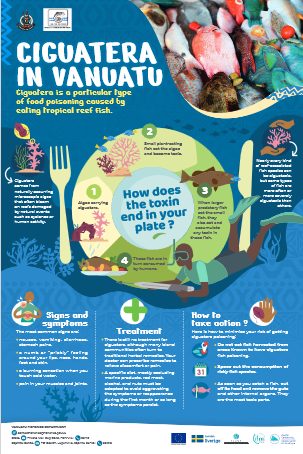The best prevention of ciguatera risk relies on the information, education and increased awareness among the general public (consumers, tourist, youth, etc.) and various social and occupational groups (Health, Fishermen, Catering, Tourism, etc.) .
One of the main lever for a better prevention of ciguatera risk remains the information, education and increasing awareness among the general public (consumers, tourists, youth, etc.) and various social and occupational groups (healthcare workers, fishermen, catering, tourism, etc.)
Hereafter are some tips for effective awareness campaigns
- The message must be simple and graphic and the information made available in the different local dialects, to reach the widest audience possible.
- Rely on any available dissemination media (newspaper, web content, video, audio, social networks), as well as conferences and workshops involving medical practitioners and healthcare workers, public meetings with fishermen or environmental protection associations, school interventions, etc.
- Information and public outreach interventions should be conducted on a regular basis
- The information provider (either focal person or institution) and their contacts (email address, phone and fax numbers, etc.) should be clearly indicated.
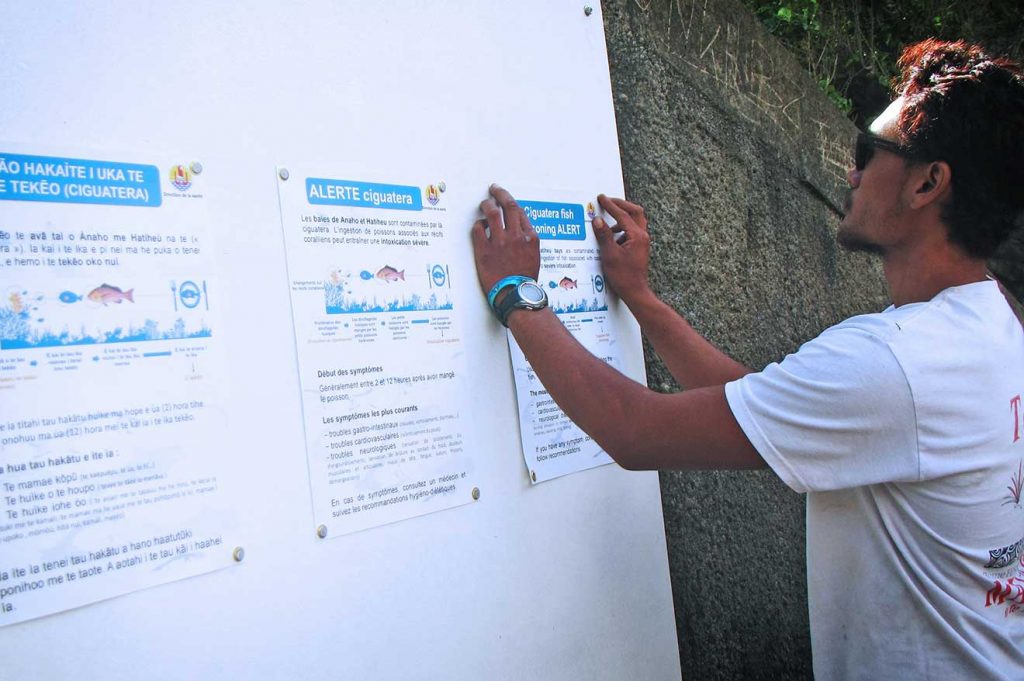


Some examples of information and awareness materials can be found hereafter.
If you are keen on publishing and sharing your own material through this platform, contact us here.
Informational materials for healthcare professionals and patients
- Healthcare professionals should be able to quickly access the required information during a medical consultation, it is therefore important they have at their disposal clear, concise and readily available information, e.g. in the form of practical sheets.
- The focal persons or institutions able to provide the required information to healthcare professionals, and their contact (email address, phone and fax number, etc.) should be clearly indicated
- Do not hesitate to print and disseminate the informational materials at various key-points (medical facilities, town halls, etc.)
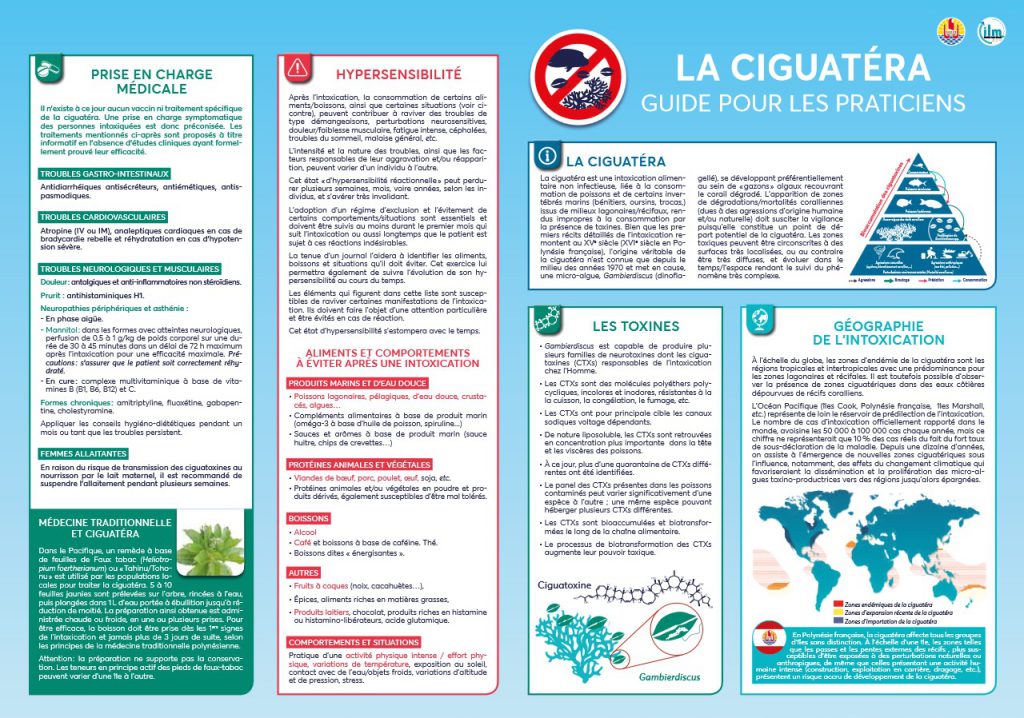
Donwload pdf versions
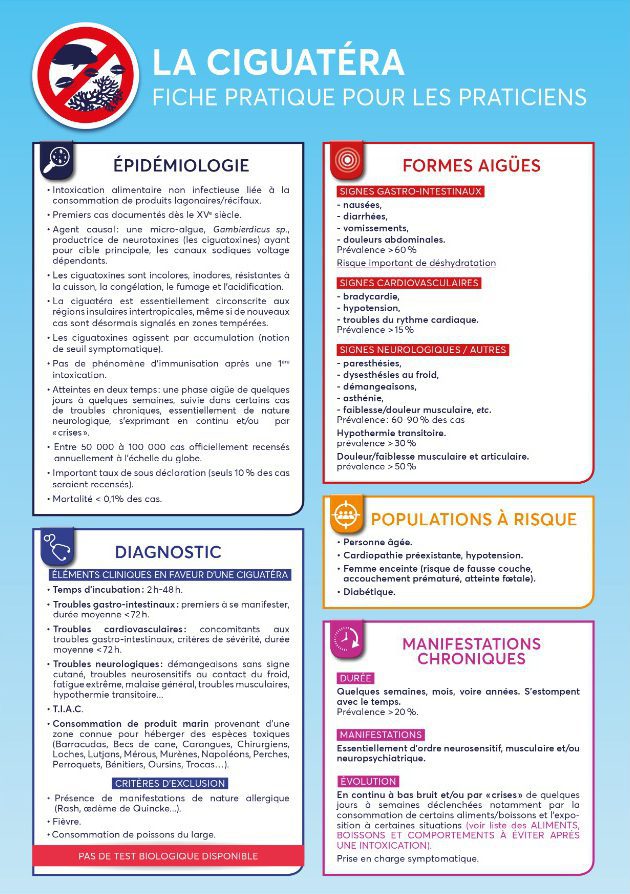
Donwload pdf versions
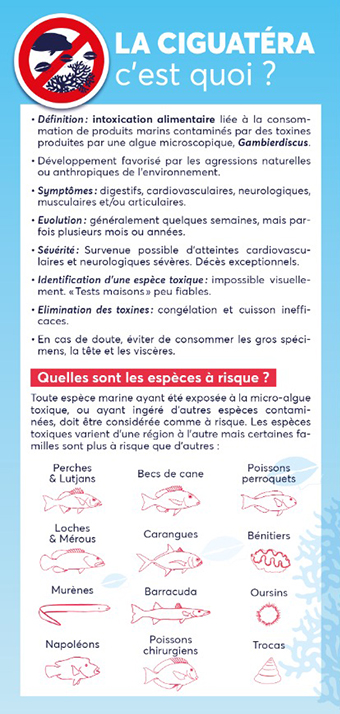
Donwload pdf versions
TV spots
- Keep the message short ( ≈ 30 seconds) and the information simple
- TV spots should be made available in the local language(s)
- 1 spot = 1 message
- The focal persons or institutions able to provide the required information to the general public, and their contacts (email address, phone and fax number, etc.) should be clearly indicated



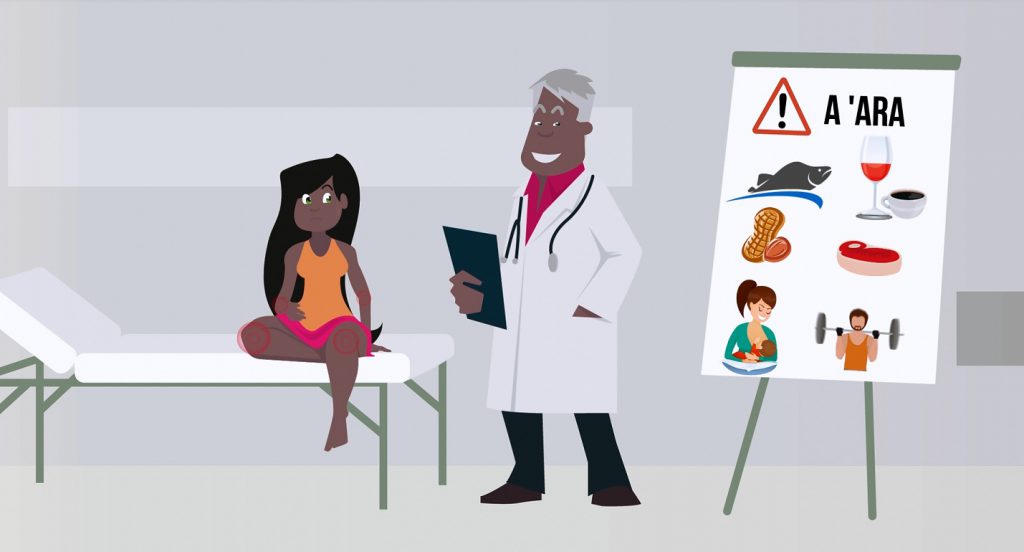
Radio spots
- Short message( ≈ 30 secondes) and simple information
- Local language(s) translation is highly recommanded
- 1 spot = 1 message
- The information providers and their contacts should be clearly indicated
Posts via social networks
Sharing information via social networks (Facebook, Twitter, Forum, etc), is an easy, free and fast way to reach a wider audience, who can feel more comfortable asking questions and sharing the published content with their relatives and/or the community.

Example of posts on Facebook
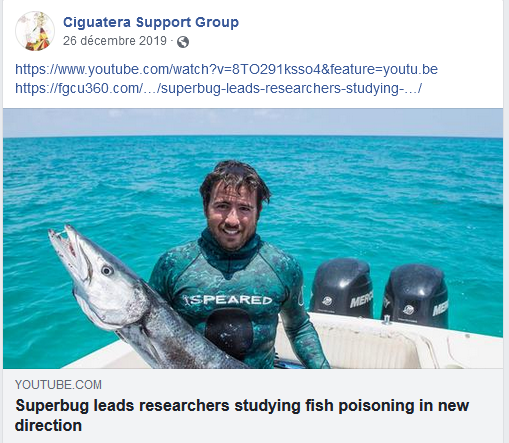
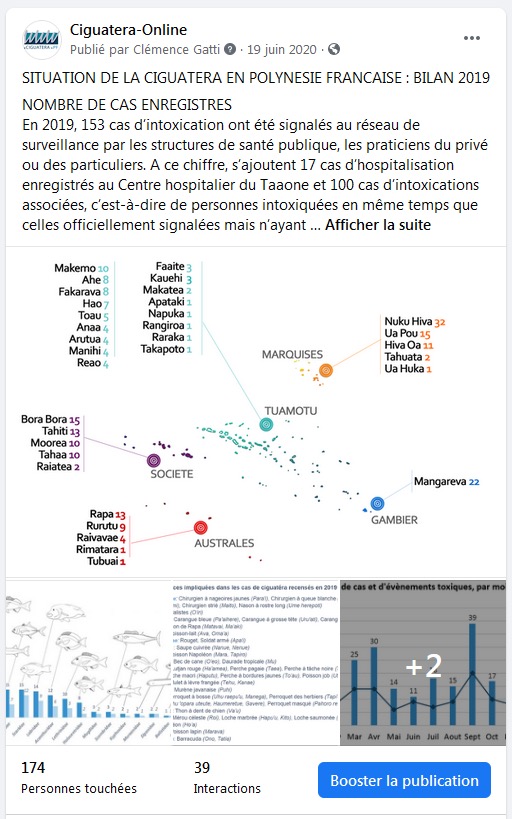

Example of posts on Twitter
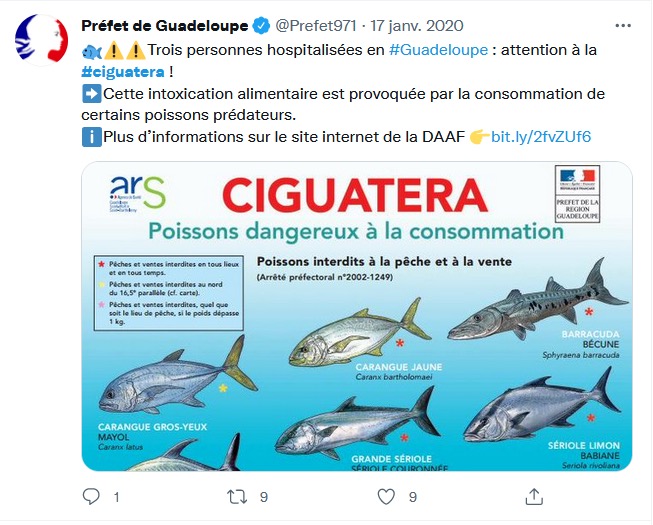
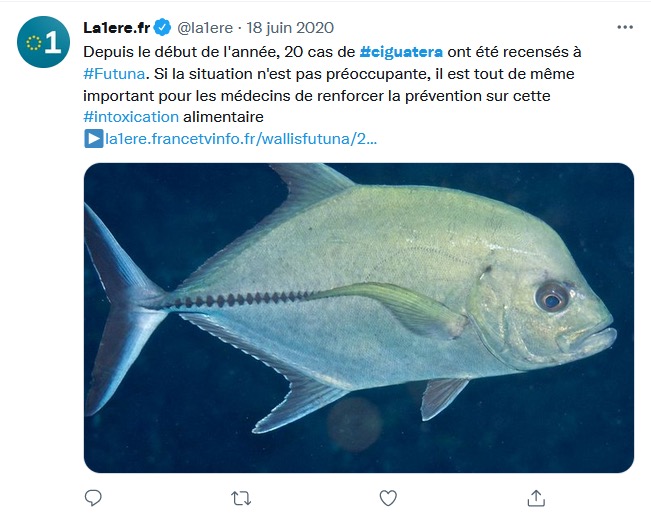
Example of Social media Content (Source https://www.spc.int)
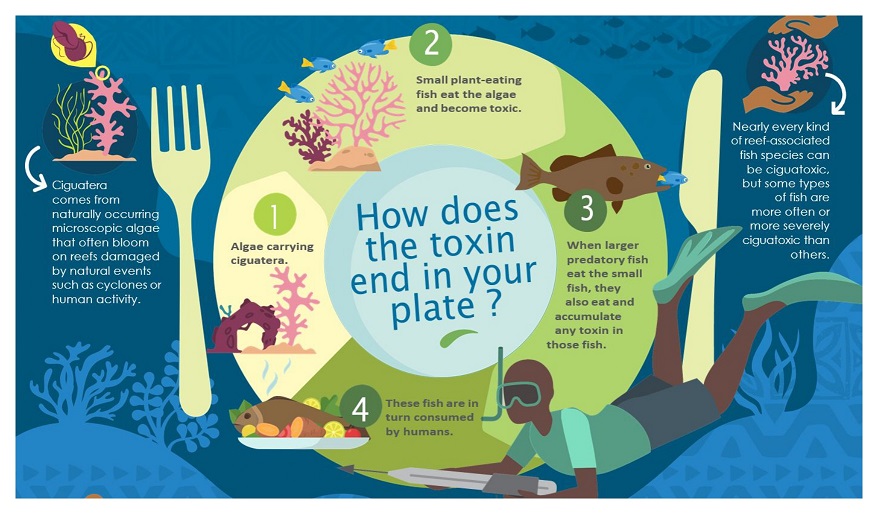
Access ciguatera awareness materials produced by the Fisheries, Aquaculture and Marine Ecosystems Division of the Pacific Community (SPC)


